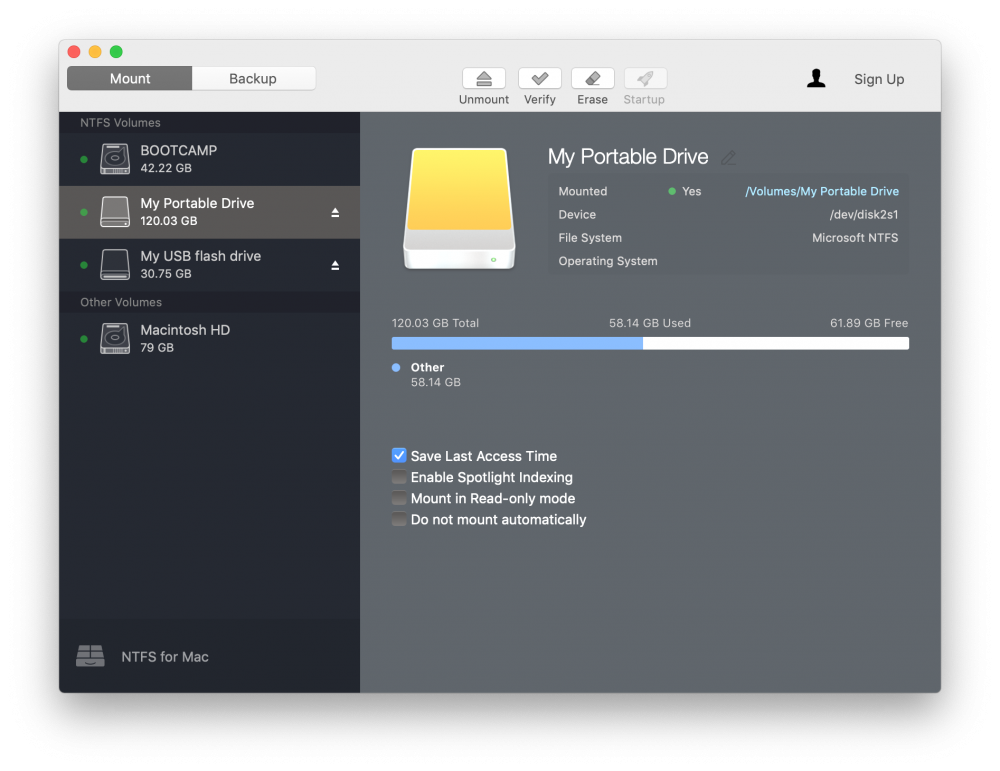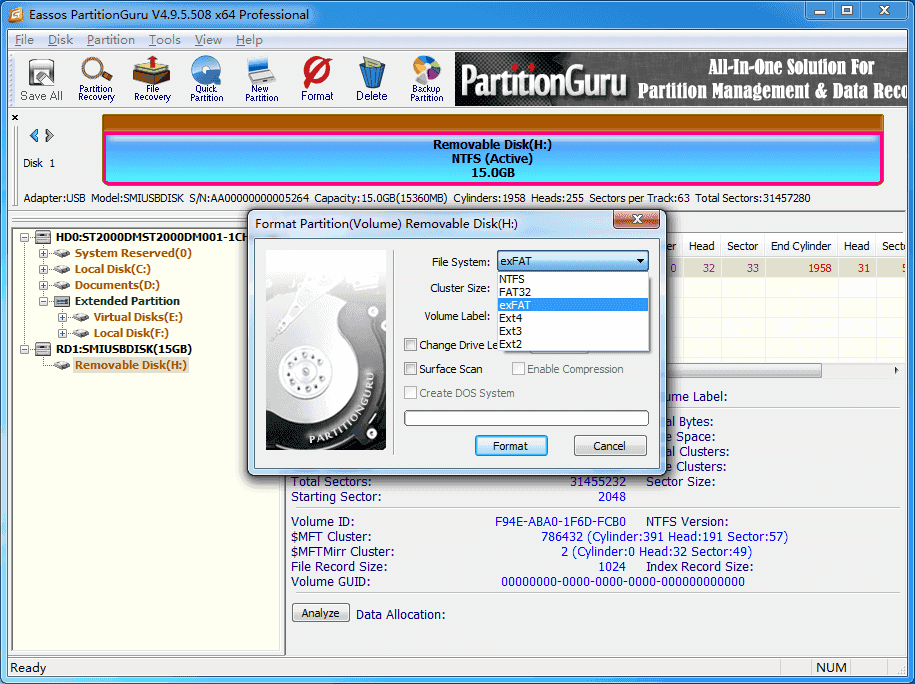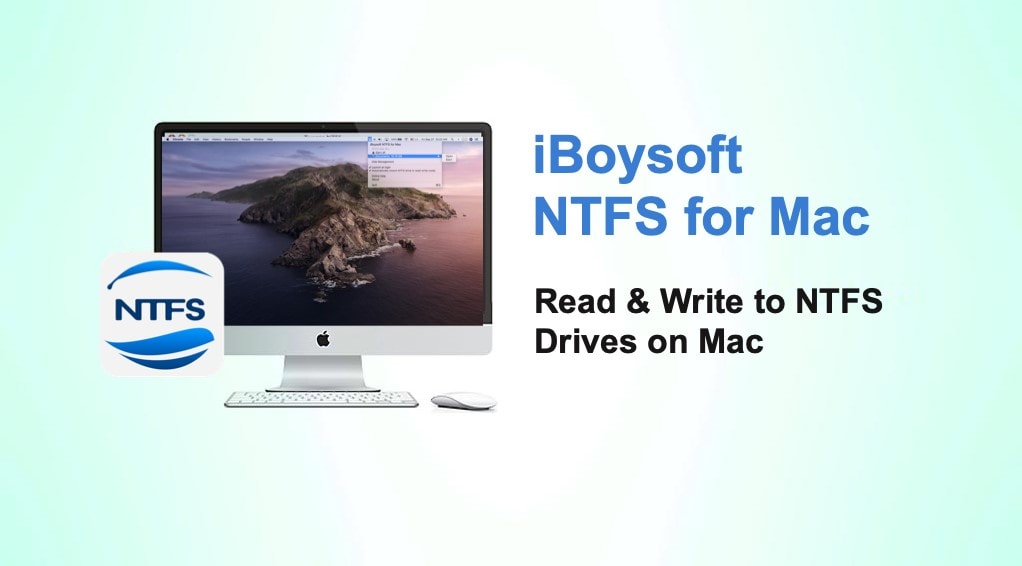
Step 6: If the NTFS partition is mounted to your Mac automatically, you need to unmount it by replacing /dev/disk2s1 with sudo umount /dev/disk2s1. Step 5: Check the partition at the Windows_NTFS file system to search for the NTFS partition which will state / dev/disk3s1. Step 4: After you attach the drive to your Mac, execute the command line: ‘ diskutil list‘, and a list of disk partitions will appear. Step 3: Type the command: ‘ sudo mkdir /Volumes/NTFS‘ to manually mount the read and write mode in the NTFS partition.

#Ntfs on mac install#
Step 2: When the Homebrew installation is complete, at the Terminal window, change the command: ‘ brew install ntfs-3g‘ to Install ntfs-3g.

Then, enter your user password, and the installation will start automatically. If you don’t have the tool on your Mac, then go to Finder > Applications > Utilities to run the command: ‘ xcode-select –install‘ and install the tools.Īdditionally, you need to install the Homebrew package manager and type the command: ‘ /usr/bin/ruby -e “$(curl -fsSL )‘ at the Terminal window and press Enter. Then it will require Apple’s command-line developer tool to continue the operation.
#Ntfs on mac download#
Step 1: Go and download the FUSE and make sure to use the Default Option during installation. You can create a link on your OS X desktop by accessing the command: ‘ sudo ln -s /Volumes/DRIVENAME ~/Desktop/DRIVENAME & open ~/Desktop/DRIVENAME‘ to access the NTFS drive that is mounted already. Step 2: Look through the /Volumes/ for the mounted Windows NTFS drive that had the read and write support. Step 4: Instead, you want to see the drive on your system, type the command: ‘ sudo ln -s /Volumes/DRIVENAME ~/Desktop/DRIVENAME‘ Step 3: Sometimes, the NTFS drive will not appear by default on your Mac, so you can retrieve it by accessing the folder at Finder from the / Volumes/ directory with the command: ‘ open /Volumes‘ Step 2: Type the command: “UUID=ENTER_UUID_HERE none ntfs rw,auto,nobrowse” > /etc/fstab’ that will String the UUID result to Append the NTFS read or write support. Step 1: Connect the NTFS drive and access UUID by computing the command: diskutil info/Volumes/DRIVENAME | grep UUID (Remember to replace the DRIVENAME with your own drive name.) Method 1: Drive UUIDĭrive UUID is the best way to enable NTFS, but it can be a little complex compared to the second method, drive name.

We will show you three easy ways to enable NTFS on your Mac with different types of command lines.
#Ntfs on mac software#
You can also use a trusted and safe third-party software to enable writing support, but you will need to disable System Integrity Protection (SIP) feature first on your Mac system! 3 Simple Ways to Enable NTFS on Mac So if you are one of the Mac users who need to enable NTFS on Mac, we strongly recommend you perform a data backup first for all of your important data.
#Ntfs on mac for mac#
It is just an experimental utility for Mac users to transfer data between Windows and Mac operating systems.Īside from all the risks that might cause data loss or damage to the NTSF drive, many Mac users still insist on getting full read and write support access.

Moreover, Apple has not considered the hidden option to be a trusted platform. If any accidental error happens whole writing, the support will cause wrong actions and lead to bad results that will damage your Mac device. Besides, it has a hidden option that allows users to write support to NTFS formatted drives, but it requires high-level expertise to operate. NTFS-(New Technology File System) is a built-in system that helps mac users to read NTFS files and write access restrictions on the files.


 0 kommentar(er)
0 kommentar(er)
